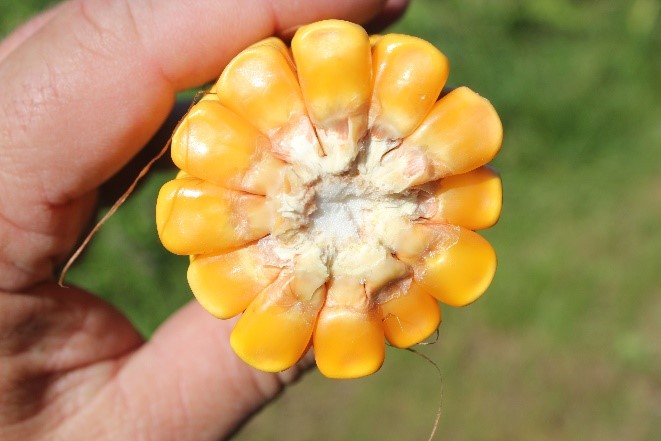MSU resources to estimate corn maturity date and accurately determine corn growth stages as harvest approaches
With the recent tough weather season for field crops, MSU Extension provides a variety of resources to help farmers estimate corn maturity and accurately determine corn growth stages as harvest approaches.

The National Weather Service in South Bend, Indiana, announced there was a potential for frost late overnight on Monday, Oct. 14, 2019, into early Tuesday morning for much of northern Indiana and southern Lower Michigan in areas away from Lake Michigan, as well as in portions of northwest Ohio. his has been the first widespread threat of frost in southern lower Michigan this fall. With the large number of acres of late planted corn across much of Michigan, the frost may impact corn that has not yet reached physiological maturity.
How much impact a frost may have will depend upon how far corn has progressed. A stretch of warmer than normal weather in September had helped to offset cooler than normal temperatures in late July through much of August. However, drought conditions and tar spot have slowed corn development in many southern Michigan corn fields.
Two resources are available from Michigan State University Extension to predict when corn hybrids may reach physiological maturity and to help identify the current stage of growth in corn fields. MSU agriculture climatologist Jeff Andresen has put together a video to show how to use the U2U GDD Decision Support Tool.
The tool can help producers to determine when corn should reach “black layer” based on the location of the field, the relative maturity group (RM) of the corn hybrid planted, and the GDD accumulation based on temperature data for the area.
MSU cropping system agronomist Mani Singh and graduate assistant Kaitlin Fusilier have developed a YouTube video to help producers accurately determine the reproductive growth stages of corn. This video can be found at "Corn Reproductive Stages."
Accurately assessing the stage of development can help you to assess the yield impact a frost or freeze can have on late planted corn, as well as provide an idea of how many additional growing degree days should be needed for the crop to reach maturity. The closer the corn is to “black layer," the less yield loss and test weight reduction is likely to occur. Frost damage to corn can occur when temperatures dip below 32 degrees Fahrenheit for an extended period of time or a freeze (below 28 F) for short periods. The most common damage during a light frost is leaf tissue damage. A freeze often kills both leaf and stalk tissues. Since the stalks can continue to provide carbohydrates to the kernels even when the leaf tissues are dead, the low temperature does matter in terms of potential damage and yield losses.
MSU Enviroweather can provide you with the number of hours that temperatures fell below freezing at the closest station to your fields. This information can be accessed on the “Weather Observations and Summaries: Overnight Temperatures/Hours Below Freezing” link for each of the weather stations. Visit MSU Enviroweather and click on the closest station to your location.
 |
 |
Identifying advanced reproductive stage corn. Image on the left is roughly at R5.25 – R5.5, (1/4 to 1/2 milkline), image on the right is R5.8 or more. Growth stage is important to estimate impacts of frost, and potential field drying time and the likelihood that corn will be able to take advantage of further GDD accumulation and reach black layer.



 Print
Print Email
Email




